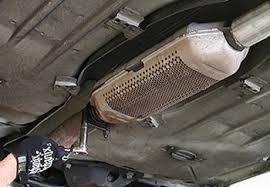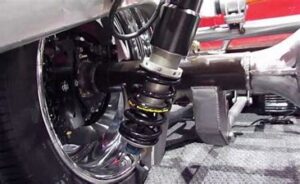One of the most important parts of your car’s exhaust system, the catalytic converter, helps to cut down on dangerous emissions. It may, however, experience difficulties with time, with clogging being the most frequent. Engine overheating, higher emissions, and reduced engine performance can all result from a blocked catalytic converter. For drivers who have similar problems, this begs the intriguing question: Is it possible for a catalytic converter to clear itself? It is crucial to comprehend the mechanics of catalytic converter obstruction. The converter converts dangerous gases, such as nitrogen oxides and carbon monoxide, into less dangerous compounds.
The catalyst, which is often composed of palladium, rhodium, and platinum, reacts with the exhaust as it passes through the converter to neutralize the contaminants. But with time, impurities like carbon and oil deposits can build up and clog the converter’s passageways, reducing its effectiveness. This article will explore the fascinating question of whether can a catalytic converter unclog itself and provide practical solutions for this problem. Now let’s set out to solve the riddle around catalytic converters’ purported self-unclogging capabilities.
Table of Contents
Understanding A Catalytic Converter In A Car In Detail
The stealthy environmental guardian of your car’s complicated powertrain is the catalytic converter. This vital element is vital in reducing the toxic pollutants that are emitted during combustion. The catalytic converter, which is housed in the exhaust system and usually sits between the engine and the muffler, works like a purifying wizard, turning toxic gases into less dangerous compounds before they leave the car. The catalytic converter uses cutting-edge materials and science to accomplish this amazing accomplishment. Its metallic container contains a catalyst, which is often made of platinum, palladium, and rhodium, among other precious metals.

These catalysts cause chemical reactions that change dangerous substances like carbon monoxide, nitrogen oxides, and unburned hydrocarbons into less dangerous substances like carbon dioxide, nitrogen, and water vapour as exhaust gases pass through the converter. By neutralizing pollutants produced during combustion, the catalytic converter in your car’s exhaust system essentially acts as a green superhero, improving the quality of the air and the surrounding environment.
Why Does Catalytic Converter Become Clogged?
Even while the catalytic converter is a powerful barrier against hazardous emissions, it can nonetheless become clogged by some unwanted enemies. To maintain optimal performance and emission control, automobile owners must have a thorough understanding of the common causes of this problem.
1. Carbon Deposits Building Up:
Carbon deposit buildup is one of the main causes of catalytic converter clogging. Unburned gasoline and lubricant residues can eventually enter the exhaust system while the engine is running. These materials accumulate on the catalytic converter and cause thick carbon deposit layers that reduce the converter’s effectiveness. This accumulation obstructs the exhaust gas flow, making it more difficult for the catalytic converter to perform the necessary chemical reactions.

2. Pollution Of Oil And Coolant:
The catalytic converter may sustain damage from extraneous materials introduced into the exhaust stream by leaking coolant or oil. The oil burns when it enters the exhaust system and leaves behind a thick, sticky residue that sticks to the inside parts of the catalytic converter. This may block the catalyst’s surface and reduce its potency. Similar to this, coolant leaks can cause a white, chalky substance to accumulate on the catalytic converter, which will impair its functionality. It is imperative to swiftly attend to leaks of coolant and oil to shield the catalytic converter from these impurities.
3. Rich Air-Fuel Mixture And Unburned Fuel:
Catalytic converter blockage can occur as a result of an automobile engine that is operating too richly or has an excessive amount of gasoline in the air-fuel combination. Under such circumstances, unburned fuel may enter the converter, overheating it and perhaps harming the catalyst. An uneven air-fuel ratio increases the risk of clogging and can be caused by problems such as defective oxygen sensors, fuel injectors, or an air intake system.

4. Impact And Physical Damage:
External elements that can physically harm the catalytic converter include crashes and road debris. Any dents or abnormalities might cause the exhaust gasses to flow less smoothly, which can raise backpressure and eventually cause clogging. Frequent inspections and quick repair of any obvious deterioration can help avert these problems.
Therefore, car owners can avoid catalytic converter clogging by being proactive and being aware of these prevalent causes. Encouraging fuel-efficient driving practices, timely repairs, and routine maintenance can all help to maintain the integrity and performance of this essential emissions control part.
Can A Catalytic Converter Unclog Itself?
No, a catalytic converter cannot clear its clog. By changing harmful emissions from the vehicle’s exhaust into less dangerous compounds, the catalytic converter is essential in lowering the harmful emissions from the exhaust. However, the converter cannot resolve the problem on its own if it becomes clogged. The accumulation of debris, such as unburned gasoline or other impurities, inside the converter, is usually the cause of clogging. The efficiency of the converter declines as it becomes clogged, which impacts the vehicle’s performance and emissions.

Furthermore, finding the source of the obstruction is crucial to clearing a clogged catalytic converter; possible causes include coolant or engine oil in the exhaust system, an oxygen sensor that isn’t working properly, or a rich fuel combination. It is imperative to get professional assistance to identify and solve the specific issue since driving a car with a severely clogged converter can result in additional damage to the engine and emission control system of the vehicle. The emission control system in your car can operate properly and prevent catalytic converter blockage by performing routine maintenance and taking care of underlying problems as soon as they arise.
Addressing Catalytic Converter Issues
To prevent further harm to your car and lessen your influence on the environment, you must act quickly if you believe that your catalytic converter is clogged or not working properly. Here are some steps to think about:
1. Diagnostic Check:
Have your car’s exhaust system checked out by a licenced mechanic or auto repair facility. Therefore, to evaluate the converter’s effectiveness, they can make use of specialised equipment.

2. Repair Or Replacement:
Additionally, your mechanic may advise cleaning the converter or replacing it, moreover, depending on the seriousness of the problem. Frequently, severe obstructions need to be replaced.

3. Fix Underlying Issues:
Take care of any underlying problems that may have contributed to the obstruction, such as repairing leaks, changing the air-fuel ratio, or addressing engine misfires.

4. Regular Maintenance:
However, to avoid clogs in the future, maintain your car regularly. This includes doing regular oil changes, changing your air filter, and inspecting your oxygen sensor.
Frequently Asked Questions:
Till now, we’ve covered all the important aspects of the topic and now let’s delve into some amazing FAQs to gain more insights into the topic.

1. Can a catalytic converter that is blocked clear itself?
Ans. No, a catalytic converter that is blocked cannot clear itself. To return it to its proper state, action is necessary.
2. What triggers the clogging of a catalytic converter?
The accumulation of carbon deposits, oil, and other pollutants over time is usually what causes clogging.
3. What signs do a catalytic converter blockage present?
Ans. Reduced engine performance, more fuel consumption, and lit “Check Engine” lights are among the symptoms.
4. How can catalytic converter blockage be avoided?
Ans. Clogs can be avoided through regular maintenance, Additionally, with the use of high-quality gasoline, and rapid repair of engine problems.
5. Can a catalytic converter be cleaned out using additives or gasoline treatments?
Ans. However, additives won’t clear a clogged converter that has already become blocked.
6. How can a blocked catalytic converter be repaired?
The choices for repair include cleaning, replacement, and occasionally removal in places where it’s permitted.
7. Is it safe to drive with a blocked catalytic converter?
Ans. It is unsafe and unsustainable, and over time, however, it could harm your engine.
8. How much does a new catalytic converter cost?
Ans. The price might vary from a few hundred to a few thousand dollars depending on the type of car and the location.
Conclusion:
In conclusion, a catalytic converter is an essential part of an automobile’s exhaust system and is essential for lowering hazardous emissions. Although if you’re wondering can a catalytic converter unclog itself, then, no it cannot unclog itself. Therefore, regular maintenance and taking care of problems as soon as they arise will help prevent clogs and ensure your car operates effectively while reducing its environmental impact. It’s always preferable to visit a skilled mechanic for a professional examination and any necessary repairs or replacements if you suspect a catalytic converter issue.
Now, that we’ve covered all the aspects of your query. We hope the above-mentioned information will be helpful to all the viewers. Additionally, if anyone faces any doubts feel free to contact us. Thank you for reading!


